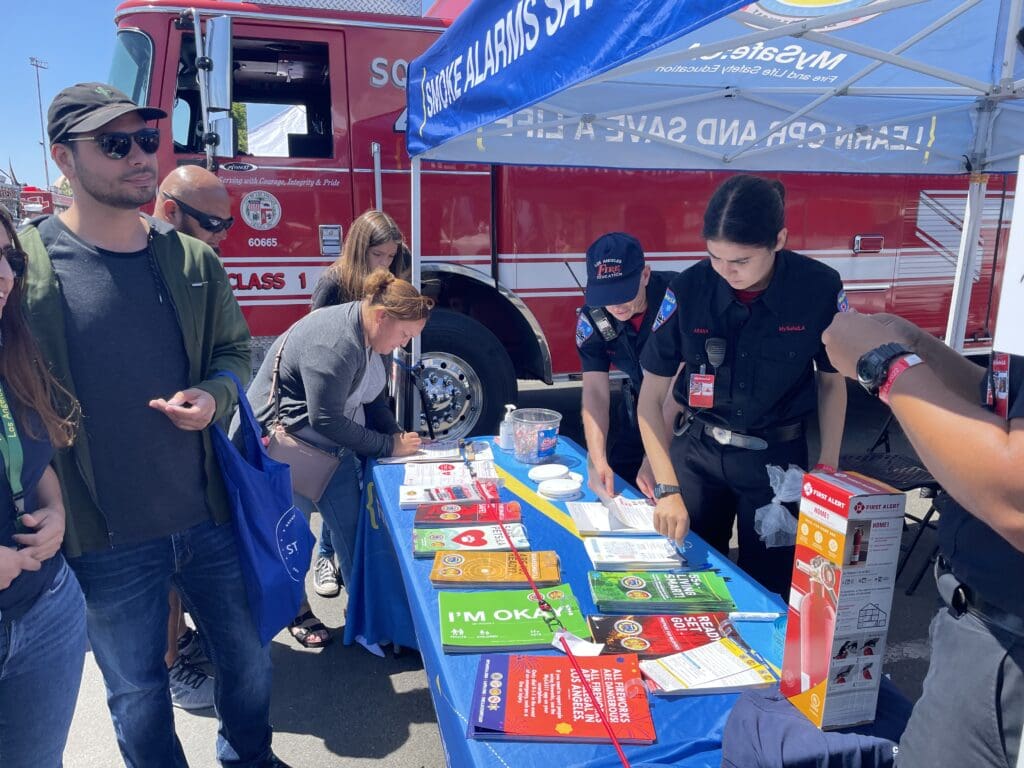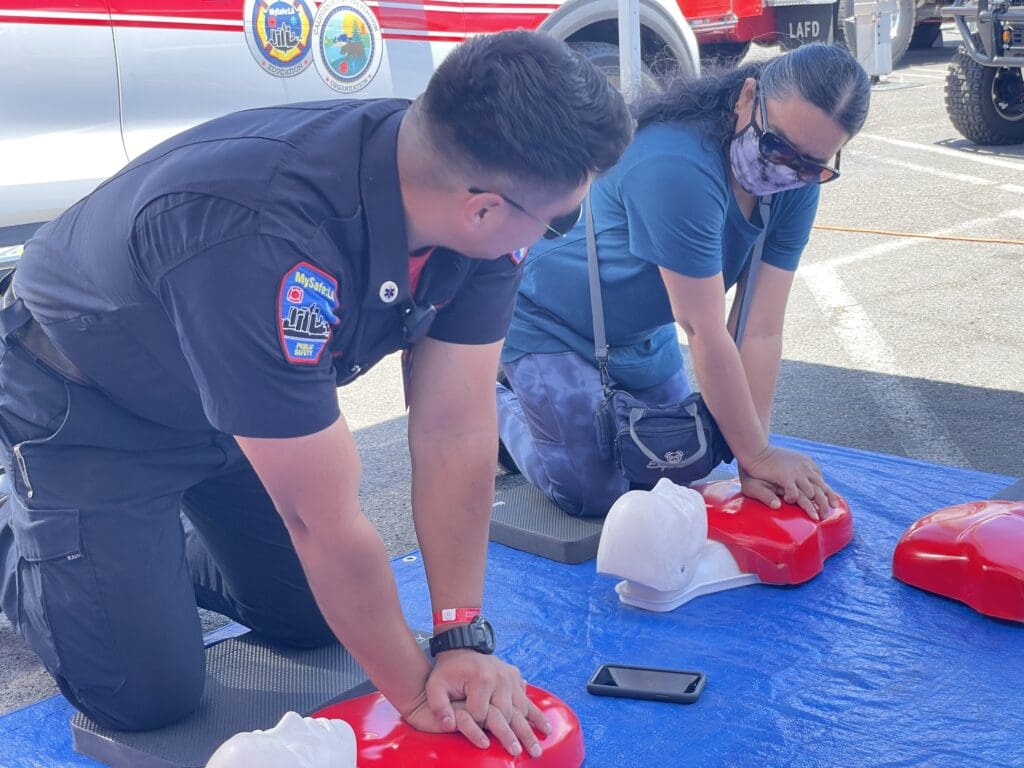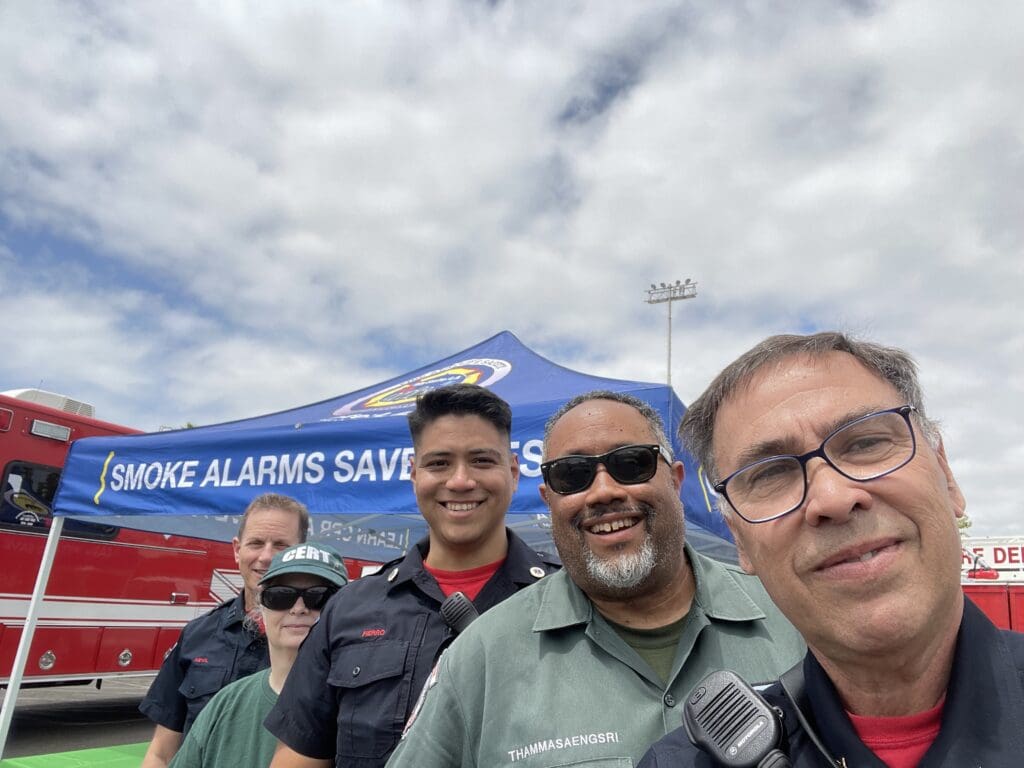Every year, MySafe:LA, a division of the Safe Community Project, participates in the annual Fleet Week activities in San Pedro. Acting in collaboration with the LAFD, CERT, L.A. Port Police, and the LAPD, a key deliverable is teaching hands-only CPR to Fleet Week attendees. This year, MySafe:LA instructors taught more than 650 people hands-only CPR.


Teaching CPR (Cardiopulmonary Resuscitation) at public safety fairs such as Fleet Week is a highly effective method to enhance community health and safety. These events provide an accessible and engaging platform to educate the public on lifesaving skills. Here are several key benefits of offering CPR training at public safety fairs:
- Widespread Awareness: Public safety fairs such as Fleet Week attract a diverse audience, providing a unique opportunity to reach people of all ages and backgrounds. Teaching CPR at these events increases the awareness of how important these skills are, potentially inspiring more individuals to seek comprehensive training.
- Immediate Skill Acquisition: Short and simple CPR sessions can provide individuals with the basic skills required to respond in a cardiac emergency. In these sessions, participants can learn the fundamentals of chest compressions and rescue breaths, which are essential in keeping the victim alive until professional assistance arrives. MySafe:LA offers CPR hands-only courses that last around ten minutes each.
- Community Empowerment: By learning CPR, community members are empowered to take action during emergencies, rather than feeling helpless. This empowerment can foster a stronger sense of community and shared responsibility for communal safety.
- Increased Chance of Survival in Emergencies: Immediate CPR can double or even triple a cardiac arrest victim’s chances of survival. Teaching more people CPR means that in any given emergency, there is a higher likelihood that a bystander knows how to perform CPR, directly contributing to saving more lives.
- Reduction in Emergency Response Times: In many emergencies, particularly in areas with longer EMS response times, immediate bystander CPR can be life-saving. Training more bystanders at public events contributes to creating a pool of informal first responders throughout the community.
- Encouragement of Formal Certification: During Fleet Week, attendees who took part in CPR presentations were encouraged to pursue formal certification. This initiative aims to increase the number of certified individuals in the community, thereby enhancing overall safety. MySafe:LA provides full certification in CPR/AED, as well as BLS First Aid to organizations and individuals upon request.
- Promotion of Health and Safety Culture: Including CPR training in public safety fairs promotes a culture of health and safety. It highlights the importance of preparedness and proactive health management, influencing community norms and behaviors around emergency readiness.
- Engagement with Health Professionals: These fairs often involve health professionals who can provide accurate information and answer questions about CPR and other health concerns. This interaction can demystify medical responses and make the medical community more approachable.
- Cost-Effective Public Health Strategy: Teaching CPR at public safety fairs such as Fleet Week is a cost-effective way to improve public health outcomes. It uses existing community events to deliver important health education without significant additional cost.
- Support for Local Health Services: By reducing the immediate severity of cardiac events through bystander CPR, residents in Los Angeles may experience less strain on local health services. This support helps optimize the use of medical resources and can improve overall healthcare efficiency.

MySafe:LA members had a truly exciting time during this year’s Fleet Week activities. With hundreds of people completing hands-only CPR, there was only one thing missing: Not enough NAVY jet flyovers!
